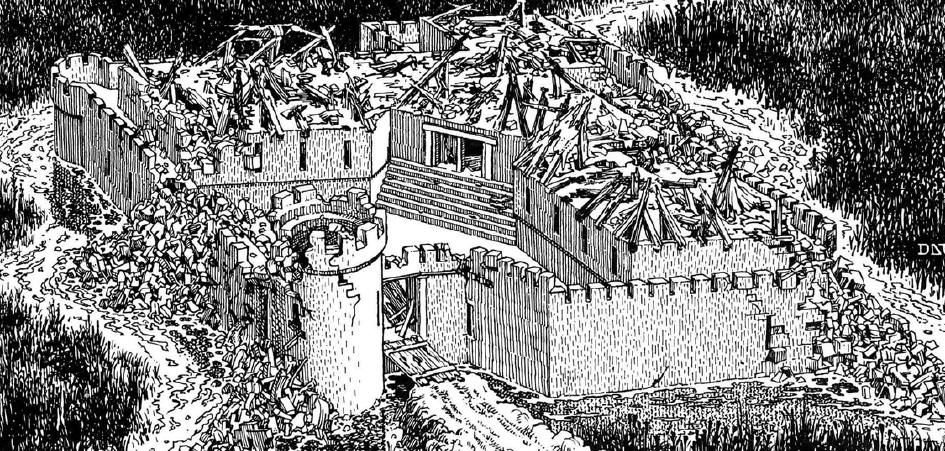

| 1. | 2. | 3. | 4. | 5. | 6. | 7. | 8. | 9. | 10. |
| 11. | 12. | 13. | 14. | 15. | 16. | 17. | 18. | 19. | 20. |
| 21. | 22. | 23. | 24. | 25. | 26. | 27. | 28. | 29. | 30. |
| 31. | 32. | 33. | 34. | 35. | - | - | - | - | - |
The following information may be
gleaned, piece by piece, through conversation
with the villagers of Hommlet.
Oldtimers
know far more of the tale than
newcomers, and certain special individuals
(notably those on the Town Council) could
relate the whole story as found here, given
sufficient provocation and trust in those
inquiring. It is unlikely that such trust
will
be cause for revelation even so, unless
seriously
interested characters attend a special
Council meeting for the express purpose
of
aiding the village through their explorations.
The appended boxed information is to be
read as the characters head for the ruins.
This place was once the outpost of the
Temple of Elemental
Evil, its watchtower
and an advance base for raids, looting,
and
destruction. From this area, servants of
the
Temple were to bring the Village of Hommlet
and all the lands around it into subjection.
The conquered folk were then to be
used as slaves to construct yet another
fortress
further west, spreading the evil power
of the Temple in ever-growing rings to
encompass all of the land around its base.
This outpost was ignored during the
destruction of the Temple, for the army
of
good which came against the wicked hordes
was so strong as to be totally immune to
any
pinpricking from the garrison of the
moathouse. Only after the end of the battle
which destroyed the main armies of the
Temple of Elemental Evil was attention
turned to this place. A detachment of horse
and foot with a small siege train then
came
to the marshlands,
to lay the castle low. The
common folk from miles around came to
help, and the moathouse was surrounded,
cut off, and battered into extinction.
The
place is now shunned by the people of Hommiet,
who hate its former evil and the memory
of the terror brought to them by the
black lord of the
fortress—a vile cleric of
damnation—and his evil men and humanoid
troops.
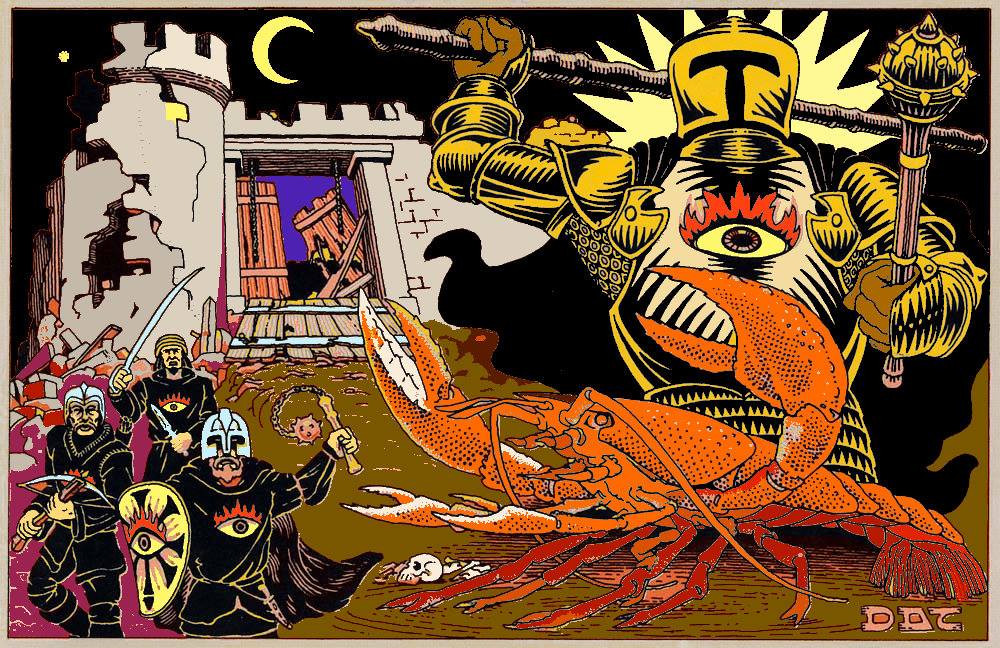
| A scrub of thorns, thistles, weeds, and
shrubs grows thickly along the edge of the track which leads to the ruins. Even the track is mostly overgrown and cluttered with fallen branches and trees. Here and there it is washed out, in other places a mire. Some game evidently still follows the
A side path, banked high to cross over
|
The track continues past the ruins for many
miles—seven leagues, in fact, to Nulb.
UPPER LEVEL OF THE
RUINS
RANDOM ENCOUNTERS
Encounter occurs 1 in 12; roll 1d6 for type.
These random encounters do not deplete
the numbers of others in the dungeon. References
to encounter areas are given for aid
in handling of the type. Check for encounters
once per turn in all areas.
| 1d6 | Encounter |
| 1. | Giant rats (2-8, see area 13) |
| 2. | Scraping noise (shifting materials above) |
| 3. | Giant tick overhead (see area 16) |
| 4. | Squeaking and rustling (rats in the floor underneath) |
| 5. | Brigands (2-5 reinforcements for area 7) |
| 6. | Footsteps (the party's own, a trick of echoes) |
Statistics
Brigand:
AC 7 (leather & <large>
shield); Level 0 (HD
1-1); MV 12"; #AT 1; D by weapon (longsword,
<ash> spear,
hand axe); XP 10 + 1/hp
Rat, giant:
AC 7; HD 1/2; #AT 1; D 1-3 + disease
(5% chance per hit); XP 7 + 1/hp
Tick, giant:
AC 3; HD 3; MV 3"; #AT 1; D
1-4; SA blood drain for D 1-6 per round;
XP 105 + 3/hp
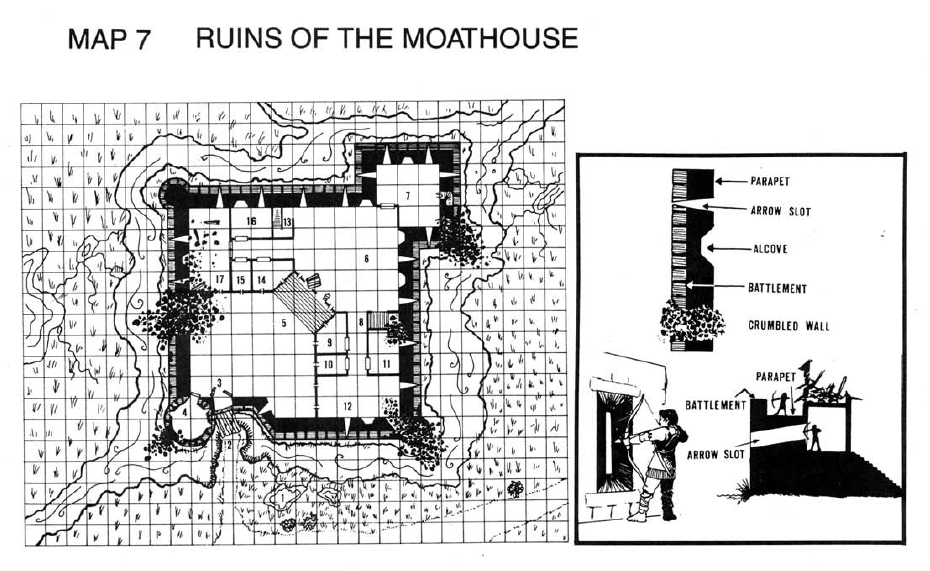
>> 1.
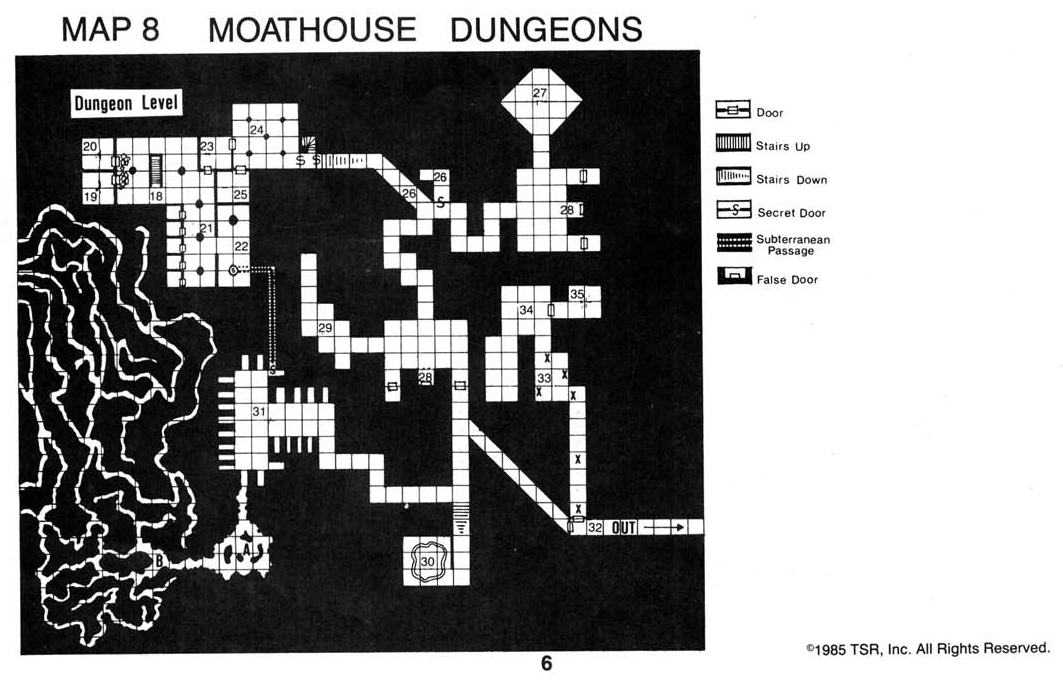
DUNGEON LEVEL
RANDOM ENCOUNTERS
Encounter occurs 1 in 6; roll 1d8 for type.
These random encounters do not deplete
the numbers of others in the dungeon. References
to encounter areas are given for aid
in handling of the type. Check for encounters
once per turn in all areas.
| 1d8 | Encounter Type |
| 1. | Footsteps (echo of party's own) |
| 2. | Giant rats (3-12; see area 13) |
| 3. | Thumping (the lizard of area 17 out hunting, or some other passing critter) |
| 4. | Zombies (2-8; see area 21) |
| 5. | Bugbears (1-2, on patrol; see area 27) |
| 6. | Moaning (the wind blowing though some cracks and crevices) |
| 7. | A distant rattling (could be anything) |
| 8. | Gnolls (2-5, on patrol; see area 29) |
Statistics
Bugbear:
AC 5; HD 3 + 1; MV 9"; #AT 1; D
2-8 (morning
star); SA
surprise on 1-3;
XP135 + 4/hp
Gnoll: AC
5; HD 2; MV 9"; #AT 1; D 2-8
(morning
star, broadsword, or guisarme);
XP 28 + 2/hp
Ogre: AC 5;
HD 4 + 1; MV 9"; #AT 1; D 1-
10 (club)
or by weapon; XP 90 + 5/hp
Rat, giant:
AC 7; HD 1/2; #AT 1; D 1-3 + disease
(5% chance per hit); XP 7 + 1/hp
Zombie:
AC 8; HD 2; MV 6 "; #AT 1; D 1-8;
SA always lose initiative;
SD piercing
weapon inflicts only 1 point damage; XP
20 + 2/hp
>> 18.
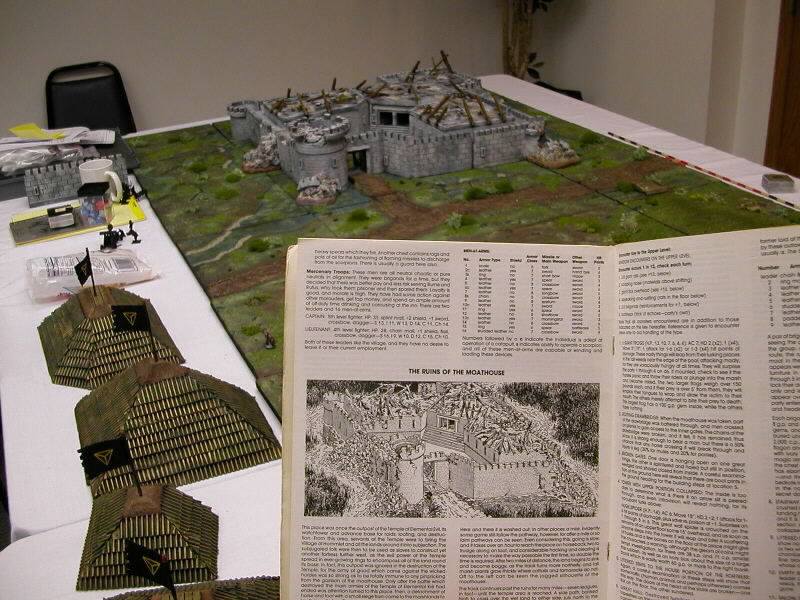
Quote:
Originally Posted by francisca
A while back I was working
up a back story for T1-4. According to the the module, the Temple of Elemental
Evil itself was built up in a matter of a few years by the forces of woe,
but I don't recall seeing any discussion of who built the Moathouse. Was
it also the work of the bad guys, or did they simply take over an existing
structure? Or, did you not even consider the issue?

The Moathouse was subsumed
as being built by a local lord some decades before the ToEE came into existance.
Cheerio,
Gary
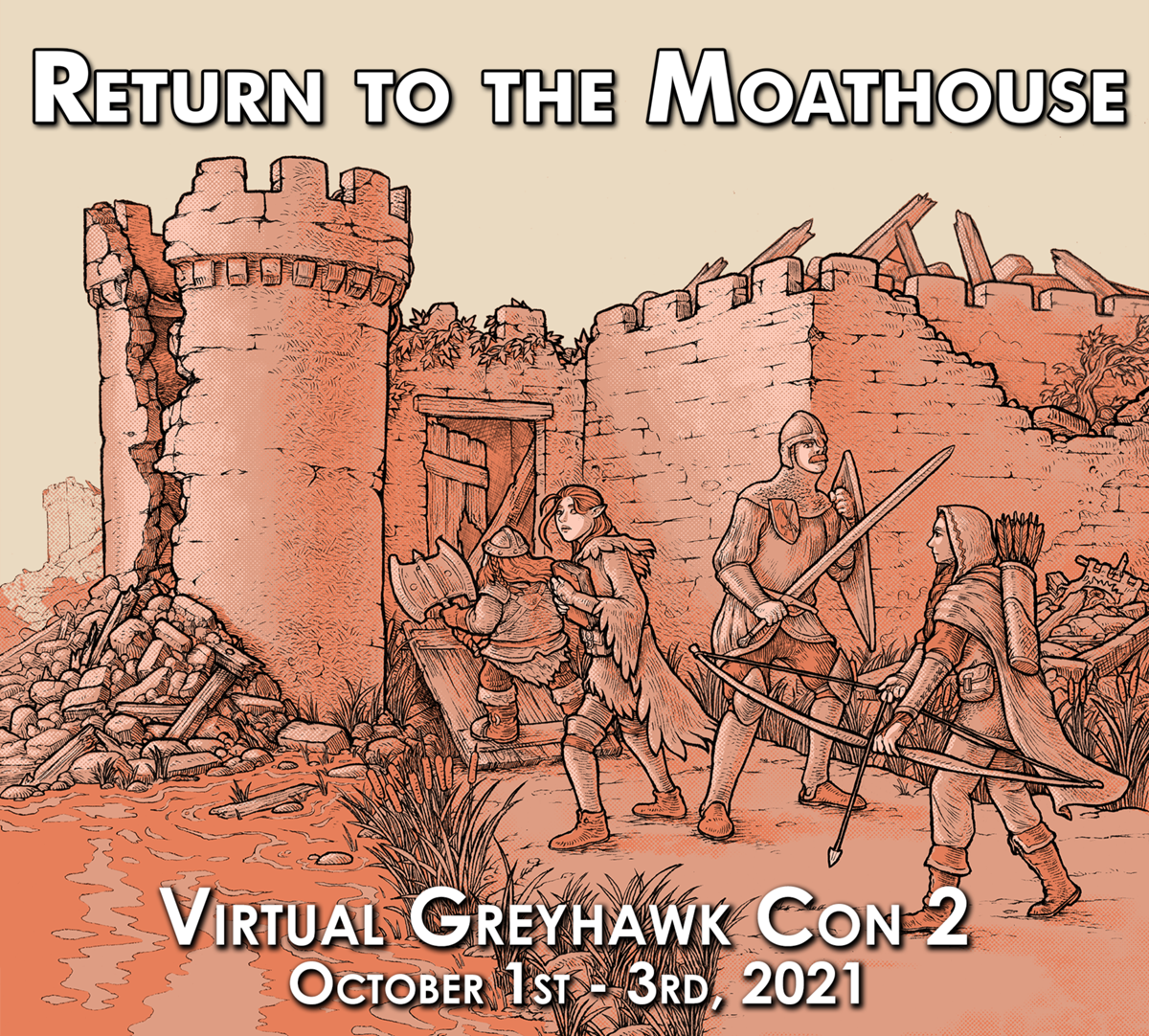
>>1.